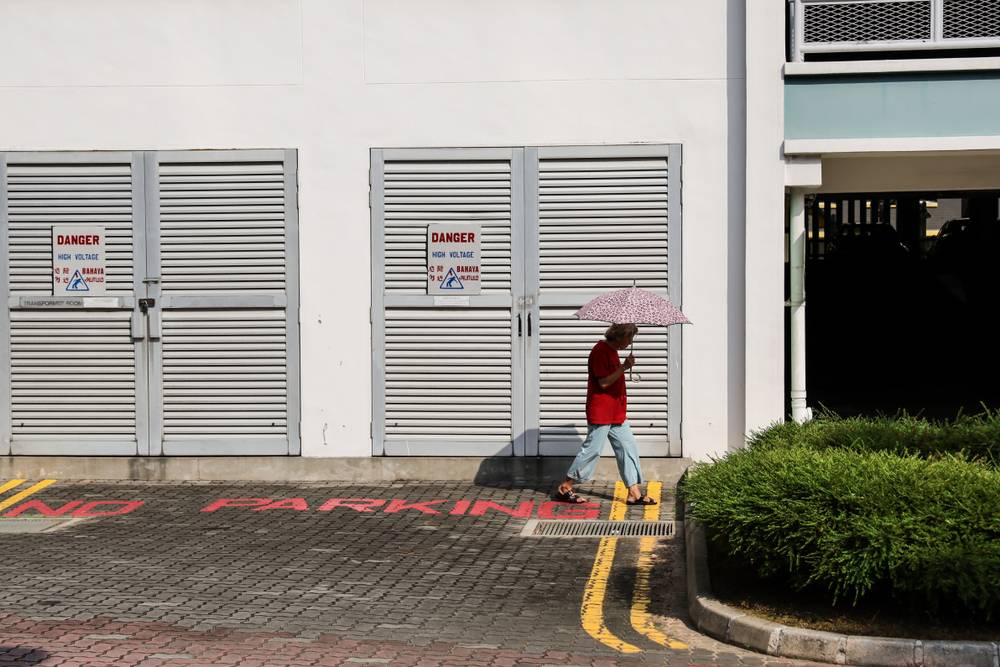Heat rash, also known as prickly heat or miliaria, is prevalent in Singapore’s tropical climate.
High temperatures and humidity lead to blocked sweat ducts, causing inflammation and discomfort. Preventive measures and treatments can ensure comfort and maintain skin health despite the heat.
Understanding Heat Rash in Singapore
Heat rash in Singapore is a common issue due to consistently high temperatures and humidity levels. The condition manifests as small, itchy red bumps, often accompanied by a prickling or stinging sensation. It typically affects areas where sweat accumulates, such as the neck, chest, back, and skin folds. Tropical climates significantly increase the incidence of heat rash due to persistent heat and moisture exposure. These environmental factors lead to blocked sweat ducts, resulting in inflammation and discomfort. Additionally, the frequent use of occlusive clothing and heavy physical activity in such climates exacerbates the condition.
How to Stay Cool and Dry to Prevent Heat Rash in Singapore
- Take Regular Cool Showers
Taking cool showers multiple times a day can help lower your body temperature. Cool water soothes the skin, reduces sweating, and clears sweat ducts. During particularly hot days, consider taking more frequent showers to maintain a comfortable body temperature and prevent sweat build-up. - Wear Breathable Clothing
Choosing the right clothing is crucial for staying cool and dry. Opt for loose-fitting, lightweight, and breathable fabrics such as cotton and linen. These materials allow better air circulation and facilitate sweat evaporation, keeping the skin dry. Avoid synthetic fabrics that can trap heat and moisture, exacerbating the risk of heat rash.
- Maintain a Cool Environment
Keeping your living and working spaces cool is essential. Close curtains or blinds during the hottest parts of the day to block out direct sunlight. Use dehumidifiers to reduce indoor humidity levels, making the environment more comfortable. Additionally, consider using light-coloured bedding and furniture covers to reflect heat rather than absorb it. - Stay Hydrated
Adequate hydration is vital for regulating body temperature and preventing heat-related issues. Drink plenty of water throughout the day to stay hydrated. Dehydration can impair the body’s ability to sweat and cool down, increasing the risk of heat rash. In addition to water, consider consuming hydrating foods like fruits and vegetables, which have high water content. - Use Talcum Powder
Applying talcum powder or other absorbent powders to areas prone to sweating can help keep the skin dry. These powders absorb excess moisture, reducing friction and the likelihood of sweat duct blockages. Use talcum powder sparingly and choose products free from irritants and allergens to avoid skin irritation. - Keep Your Skin Clean and Dry
Regularly cleanse your skin to remove sweat and bacteria. Use mild, fragrance-free cleansers to prevent skin irritation. After cleansing, pat your skin dry with a soft towel rather than rubbing it, which can cause irritation. Pay special attention to areas where sweat accumulates, such as the neck, armpits, and groin.
Topical Treatments for Heat Rash
Using topical treatments can effectively soothe irritated skin and reduce inflammation associated with heat rash. Calamine lotion is commonly recommended for its cooling and anti-itch properties. Hydrocortisone cream can also be used to alleviate itching and inflammation. Apply these products as directed, and consult a healthcare professional if symptoms persist.
Dietary Considerations
Diet plays a role in managing body temperature and preventing heat rash. Consuming cooling foods such as cucumbers, melons, and leafy greens can help regulate body heat. Certain foods have a thermoregulatory effect, helping to maintain a lower body temperature in hot climates. Additionally, avoiding spicy foods and caffeine, which can increase body temperature and sweating, is advisable.
Recognising and Addressing Severe Cases
While heat rash is typically mild and manageable, severe cases can occur, especially in persistent hot and humid conditions. Recognising symptoms of a severe heat rash, such as large areas of red, inflamed skin or blistering, is important. If these symptoms develop, it is crucial to seek medical attention promptly. Medical treatments may include prescription creams or antibiotics if secondary infections develop.
Practical Tips for Children and the Elderly
Children and the elderly are particularly susceptible to heat rash due to their skin’s sensitivity and reduced ability to regulate body temperature. For children, ensure they wear light, breathable clothing and stay in cool environments.
Frequent diaper changes and using barrier creams can help prevent heat rash in infants. For the elderly, maintaining a cool living environment and avoiding strenuous activities during peak heat hours are essential.
Monitoring and Adjusting Lifestyle Habits
Regularly monitoring weather forecasts and adjusting your daily routine can help manage the risk of heat rash. Plan outdoor activities for cooler times of the day and seek air-conditioned environments when possible. Incorporate lifestyle changes such as wearing hats, using umbrellas, and staying in shaded areas to minimise heat exposure.
By implementing preventive measures such as staying cool and dry, wearing breathable clothing, and maintaining good hygiene, you can significantly reduce the risk of developing heat rash. Additionally, using topical treatments, adjusting your diet, and recognising severe cases ensure effective management of this condition.












